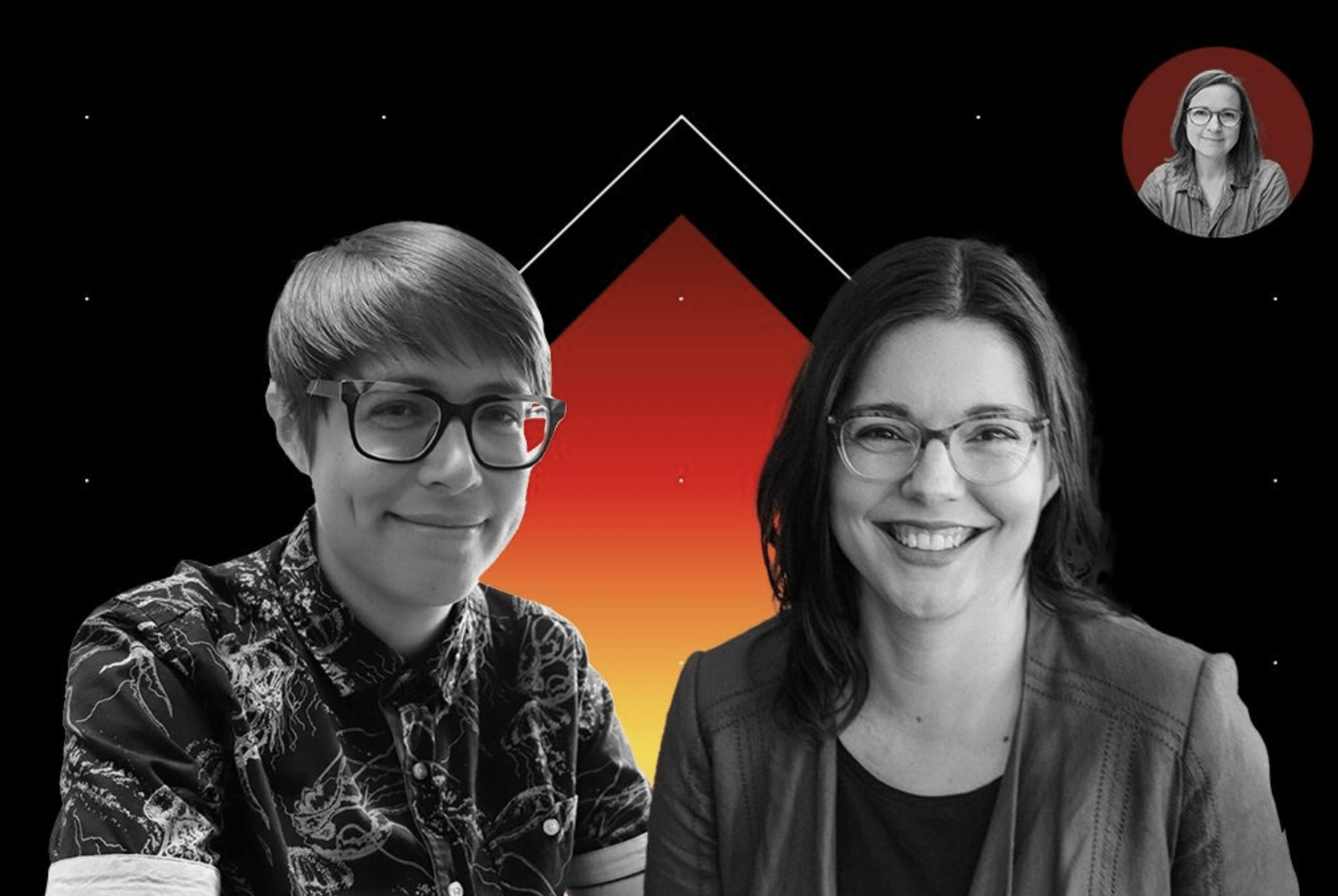
As a consultant focused on participatory grantmaking, I have been thrilled to see growing interest in community-led grantmaking practices. At the same time, I have been disheartened to see common misconceptions spread throughout the sector, such as that participatory grantmaking is new or unproven. I’ve also seen philanthropists dismiss participatory grantmaking as a passing fad.
What we take as ‘normal’ in modern philanthropy is based on the fundamental, and frankly patronizing, assumption that the wealthy are best suited to distribute grants.
Perhaps we should instead call modern philanthropy new and unproven. Modern philanthropy in the US emerged in the early 20th century and was developed primarily by the robber barons of the time. It is difficult to prove that modern philanthropy has done much good. To the contrary, it has siphoned over $1 trillion into private control, the majority of which remains in the market and is never distributed to the benefit of communities.
What we take as “normal” in modern philanthropy is based on the fundamental, and frankly patronizing, assumption that the wealthy are best suited to distribute grants—a notion that turns a blind eye to the fact that this practice gives those who extract (or have even stolen) community wealth the power to choose how to distribute this wealth.
Participatory grantmaking, on the other hand, is based on movement frameworks that have been around for centuries—and has roots in community distribution models that have been practiced for millennia. Even in today’s formal philanthropic sector, it has a considerable track record.
In collaboration with a national foundation, I recently had the opportunity to research some of the most longstanding community-led funds in the nation and to learn from them about what it takes to embed effective participatory grantmaking in philanthropic institutions and create authentic community engagement. Inspired by a recent Groundswell “Open Letter to Philanthropy, from People of Color-led, Movement Accountable, Public Foundations,” the foundation selected 10 community-led organizations that have been engaged in different forms of participatory grantmaking, some for over 40 years.
- Appalachian Community Fund
- Borealis Philanthropy
- Emergent Fund
- Hawai’i People’s Fund
- Haymarket People’s Fund
- Liberated Capital, a fund of the Decolonizing Wealth Project
- Liberty Hill Foundation
- North Star Fund
- Potlatch Fund
- Southern Partners Fund
All the organizations I spoke with received grant funding to honor the time they spent discussing their work. I encourage anyone reaching out to these groups to learn from them to offer appropriate payment as well.
What It Takes
There is no single formula for “how to” do participatory grantmaking. As noted above, the practice is rooted in traditions that go back millennia. Nonetheless, in the interviews, some key values-aligned practices emerged that groups are using to bring those gifting traditions back into philanthropy:
Provide flexible funding: Seven of the 10 organizations interviewed indicated that they provide primarily flexible funding, including general operating grants, rapid response grants, grassroots grantmaking, grants to smaller and newer organizations, grants to individuals, mutual aid funding, and funding to non-501c3s. Many also named other forms of flexibility, such as taking proposals and reports verbally, by Zoom or phone, filling out proposals on behalf of their grantees, making sure the grant process is not extractive to grantees, and not requiring reporting.
Build trust-based relationships: Eight of the 10 organizations interviewed identified having trusted relationships in the communities they serve and utilizing trust-based processes. Many groups highlighted the importance of working with outside facilitators to support their work, hiring staff from the communities they serve, and leveraging existing relationships with grassroots and community-based leaders and organizations to quickly move funds, recruit for boards or committees, and develop trusting relationships. Four groups talked about the importance of dedicating both staff and time to relationship building. While a few groups mentioned the need to heed conflicts of interest given interwoven relationships in the work, this wasn’t a barrier; all 10 groups were able to navigate understanding when someone is allowed to advocate on behalf of a project or needs to recuse themselves.
Ensure feedback and iteration: Every organization identified feedback and iteration as core principles. They shared adaptations they’ve made based on participants’ feedback. Three groups talked about how organizing trends change over time and how critical it is to adapt their processes alongside changing movement needs. A few groups mentioned how the iteration process can inadvertently shift practices back towards traditional philanthropic processes depending on who is being listened to or based on pressure from certain stakeholders. Everyone said that the work entails constantly paying attention to and unpacking power dynamics at play in participatory processes.
Mind the gap: Another theme was the challenge around creating representative organizations and the need to be on the lookout for areas that grantmaking inadvertently leaves out. At least six organizations talked about the importance of creating a group that is representative of the community being served. Groups with a regional focus emphasized the importance of having a representative from each state or region served, while acknowledging that perfect representation is not possible. They also shared that identifying what issues were not showing up in grant requests helped them identify who was missing from their participatory grantmaking constellation. Other groups named how they might, for example, have great BIPOC representation in their programs but noticed a lack of youth and people with disabilities. By looking at the gaps in their networks, they could engage people from different backgrounds and geographies, increasing inclusion and widening their networks. Additionally, many groups were encouraged to invite staff members other than the executive director or CEO to participate in the grantmaking process, both to expand the variety of people engaged and create more leadership opportunities.
Participatory grantmaking requires an equity lens
Be introspective: Many of the groups interrogated their own role as funders and their responsibility to the communities they serve. For example, one group felt it was their responsibility to return resources to communities that have been historically displaced and oppressed and endured legacies of genocide and slavery. Others spoke about their role in helping to heal and build relationships with communities, especially where the philanthropic community has done harm. Others shared that they have taken on as much administrative work as possible, from collecting data to drafting proposals on behalf of grantees, to make the grant process as non-extractive as possible for those seeking funding.
Embed equity: All the groups interviewed emphasized the need to explicitly embed anti-racism, equity, and lived experience into their entire organization; half had done so from their founding. A handful of groups started by embedding anti-racism and equity in their grant programs and found that the process raised questions about leadership and governance throughout the organization. Realizing this work couldn’t be done only in grantmaking programs, the organizations became more holistically community-led at every level. Unfortunately, at least two groups lost funding after being more explicit about their anti-racist values, demonstrating how deeply embedded racist beliefs remain in philanthropy. Ultimately, the lesson is that participatory grantmaking requires an equity lens. It is not enough to ask for volunteer proposal reviewers and expect to get a diverse set of voices. Practitioners need to ensure that participants have lived experience of the issues the funder is looking to address—and make grantmaking spaces accessible and safe as well.
Invest in education: Six groups said education was needed in their organizations and grant review committees, for funders/donors, and in wider communities to understand anti-racism and equity in the wider political context. Two groups mentioned working with the Giving Project Model, which offers political and donor education across race and class to create locally accountable, community-led democratic grantmaking.
Sign up for our free newsletters
Subscribe to NPQ's newsletters to have our top stories delivered directly to your inbox.
By signing up, you agree to our privacy policy and terms of use, and to receive messages from NPQ and our partners.
Best Practices
When it comes to the nuts and bolts of establishing a participatory grantmaking program, some best practices and trends were evident, including:
Ensure accessibility and compensation: Almost every group mentioned making sure that participants’ needs are met. This means not just providing monetary compensation, but removing barriers to participation, such as by offering childcare, improving accessibility related to disabilities, or paying attention to how people take in information—whether by video, text, or other means. It is also important to be clear from the outset about expectations of participants and how much of their time a process will take. Some groups shared that if a process was asking too much of participants’ time and/or energy, they knew they needed to pivot. Ultimately, recognizing that participants’ wisdom is a resource needed by funders, it is best practice to compensate people for their time.
Removing donors from decision-making: From a governance perspective, most groups had moved away from donor “seats” on their committees. This enables committees to avoid problematic power dynamics and ensures that grantmaking decision is in the hands of those with lived experience of the issues being funded. Three groups stated that they use consensus-based decision making. Nearly all the groups placed final grantmaking authority in their grant committees. Those organizations whose boards sign off on grants made it explicit that the board cannot weigh in on final decisions. Worth noting is that most of the groups have community boards, so the power dynamic is not necessarily the same as in a private or family foundation.
Utilize peer nominations: At least four groups utilized peer nominations to identify grantees and committee members. Inviting grantees to nominate their peers can help upend the scarcity mentality that modern philanthropy encourages while building trust and community. In addition, trust-based nomination processes help other funders connect with people left out of standard philanthropic networks.
The Future
Throughout my conversations, two themes emerged again and again that offer context for how participatory grantmaking is evolving and where the learning edges are. One is further deconstruction of modern grantmaking practices. The other is participatory grantmaking as a tool for healing.
Funders looking to be more participatory will often invite community members and movement leaders to review proposals and make decisions about grants, either with or without the donors. This practice changes who decides, but often fails to change how decisions are made. As a result, many assumptions that exist in modern philanthropy, such as the need for objectivity, due diligence, and the notion of scarce resources, are perpetuated. Many groups spoke out about how these practices replicate white supremacy culture and entrenched power structures. Participatory grantmaking advocates desire to change more than just who reviews proposals.
[Community] leaders are saying, quite simply, that if you want us to be involved, you need to be open to changing the processes as well as the people.
A common criticism of participatory grantmaking is the time it requires of participants, especially when participants are asked to work without compensation. Many people who are asked to sit on committees are doing movement work and don’t have time for long, involved processes created by funders. Four groups I spoke to changed their process to avoid making participants sit in judgment of their peers in an already fragile space. They said that such processes risked reinforcing the scarcity and competitive mindset brought by funders and don’t represent the participants’ world views.
In the past few years, I’ve heard funders reiterate criticisms like those mentioned above out of context, using such critiques to suggest that participatory grantmaking doesn’t work and to argue for maintaining the status quo. But this misstates the critiques that community leaders are making. These leaders are saying, quite simply, that if you want us to be involved, you need to be open to changing the processes as well as the people.
What are the alternatives? One group chose to fund all grant recipients at the same amount. A second offered two tiers; applicants received a larger or a smaller grant. A third group used a first-come-first-served model with pots of money for each region and focus area. This group found that operating from a trust-based approach, with limited due diligence, best reflected their Indigenous worldview of how gifts flow in an interwoven community. This approach also helped them build stronger relationships with a wider group of people in their community and hence better meet community needs.
The last theme worth emphasizing—and perhaps one of the most striking themes to emerge—was the notion of the need to heal money trauma. This includes both trauma experienced by individuals who are asked to participate in grantmaking, as well as trauma experienced by organizations that have been subjected to the vicissitudes of philanthropic fad and fashion. The community-led intermediaries interviewed noted the common nature of this problem for the groups that they support. Seven of the 10 organizations interviewed specifically noted the harm philanthropy has done to communities, impeding the building of trusting, authentic relationships.
Many groups shared that when moving down the participatory path, they were told that community organizers did not have the knowledge to make decisions about large sums of money. Others described the distrust they experience from the philanthropic sector—being required to provide extensive paperwork, including audit letters, financials, long narratives, and lists of board members to prove trustworthiness. Most indicated that they felt depleted by such grant processes.
As practitioners of participatory processes, many groups emphasized that a central aspect of the work is to create safe spaces for participants and facilitate conversations about money through a liberation lens. A few groups also named the importance of bringing a decolonizing mindset to how we think about raising and giving away money.
A few spoke specifically about how the community partners they support often navigate collective trauma—and need space to care for each other. When they asked how they could be of most service to their communities, these intermediaries were asked to use their influence to bring issues of trauma that community groups face to funders and the larger field of philanthropy. One response to such requests was the creation of Liberated Capital, a fund of the Decolonizing Wealth Project, which offers healing programs grounded in an Indigenous worldview. Ultimately, participatory grantmaking can, if structured well, be a space for healing, both for communities and for donors seeking to support a culture of repair.















